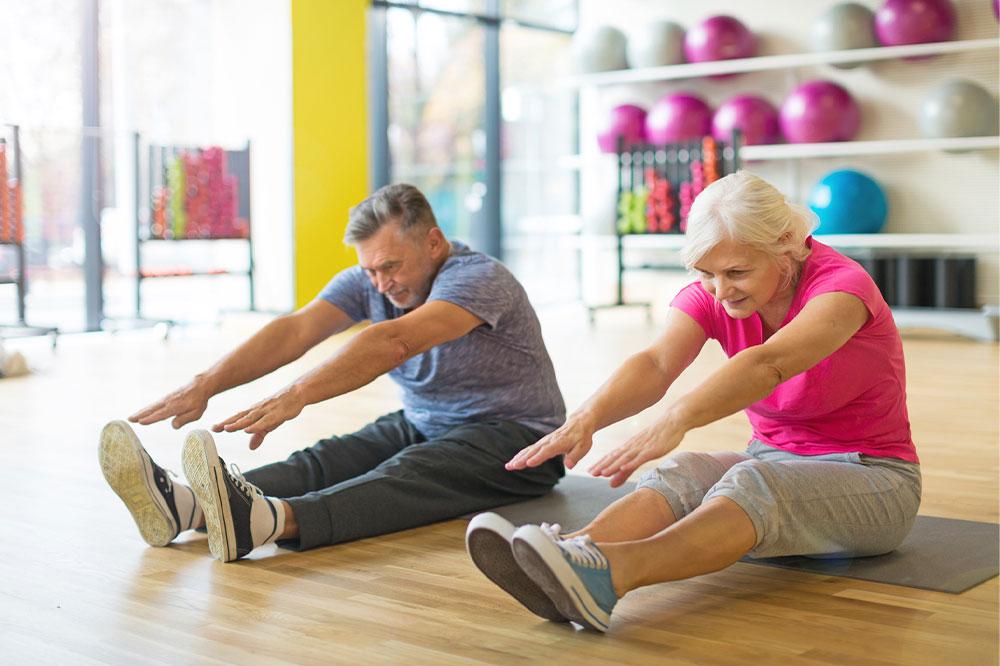6 Exercises That Help Recover After a Stroke

A stroke is a health emergency and requires immediate attention. It occurs when a blood vessel in the brain ruptures or a blockage affects the blood supply to the organ. In both cases, the brain is deprived of oxygen. Consequently, the brain cells get damaged, leading to a loss of physical and cognitive abilities. While the condition is curable with timely treatment, you may also need to perform stroke recovery exercises to function normally.
Why are stroke recovery exercises important?
A stroke can cause chemical changes in the brain, damaging its cells. As a result, the organ’s performance is affected. You may not be able to move or function properly. But the human brain has self-healing capabilities. It can repair and rewire itself. After a stroke, the healthy brain cells take over, performing the tasks previously undertaken by the damaged ones. But to ensure this happens, particular actions must be performed repetitively so that the brain can relearn and execute them through different neural pathways. This is where recovery exercises come in. They help relearn specific tasks and movements, which, in turn, restores normalcy over time.
The specific exercises can also provide other benefits, including improved strength, endurance, and balance. Studies have shown that they even reduce the risk of stroke recurrence. Further, they positively influence mental health by reducing depression, improving mood, and relieving stress.
Exercises for stroke recovery
Many exercises help recover after a stroke, but it is advisable to consult a doctor to choose a suitable one as per your ability. Different movements engage different parts and muscles of the body. Here are a few options:
Wrist curls
Wrist curls are isolated movements that help improve range of motion and gripping skills. The best part is its simplicity. All that is required is a chair and any light object. Start by sitting straight on the chair, your hands on the armrests and palms facing upward. Ensure your wrists are over the edge of the rests. Then hold the object firmly in and start bending the wrists toward and away from the body. Ensure this movement is slow and controlled. Repeat a couple of times.
Shoulder opener
Another excellent stroke recovery exercise is the shoulder opener. It improves range of motion and shoulder strength. To do it, you only need an easy-to-hold light object. Start with your hands in front, holding the object with inward-facing fingers. Ensure the elbows are folded at 90 degrees. Then, in a slow and controlled movement, move your fists sideways while keeping the portion of the arms above the elbows in the same position. Now bring your fists back to the starting position. Repeat this movement a few times. It can be done sitting or standing.
Hip abduction
Hip abductions are also great for improving mobility. They also help strengthen the legs, back, and core, enhancing coordination and balance. All that is required is a strong, stable chair. Start by sitting up straight at the edge of the chair. Then tighten your abs and straighten the knee of either leg so that the toes point upward, the heel touching the floor. Now, slowly move the foot outside. After this, slowly return to the starting position. Repeat with the other leg. Beginners may lie down to decrease the movement intensity. Alternatively, it can be done standing for increased difficulty.
Sit-to-stand
This is perfect for improving core strength, leg muscle strength, balance, and weight-shifting capability. The only equipment required is a stable and strong chair. To begin, sit upright in the chair, knees bent at 90 degrees. Ensure the feet are firmly landed on the ground. Now rise, but make sure your knees do not cross the toe tips. Slowly return to the starting position. Beginners can grip the armrests for support while standing. To make the workout more challenging, cross your arms across the chest. Even healthy individuals may perform this to strengthen the lower body.
Tabletop circle
Another easy yet helpful stroke recovery exercise is the tabletop circle. The equipment includes a table, chair, and any light object. Start by sitting at the table and wrapping your hands around the object placed on it. Simply move the object around the table surface in a circular motion. It can be done both clockwise and anticlockwise to stimulate both sides of the brain. Repeat a few times. It is helpful to try and maintain an erect posture as much as possible while sitting at the table.
Standing knee raises
Knee raises have many benefits. It not only strengthens the core, hips, and back but also improves posture. This exercise can be done anywhere as all that is required is a firm surface to hold on to. Stand straight and hold on to the surface. Then shift your weight onto one leg and lift the other knee. Bring the knee to a 90-degree angle and hold for a few seconds. Bring your leg back down and repeat the entire movement with the other leg. Besides improving posture, this exercise may help with coordination.
Note that these exercises can be tailored to suit different requirements. Some individuals may be able to move after a stroke, while others may face paralysis, so the same movement may not be suitable for both groups. However, remember to use the right equipment for the best results. It is best to consult a doctor or expert to help choose the right exercises and perform them correctly when just starting out.






